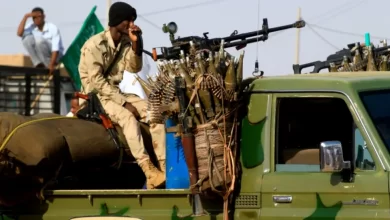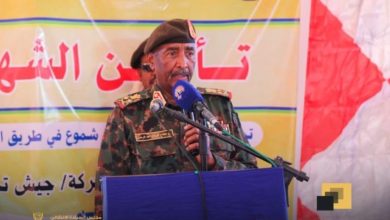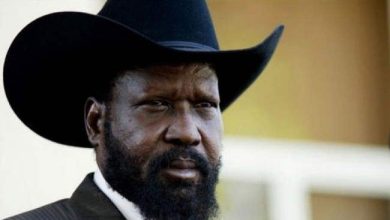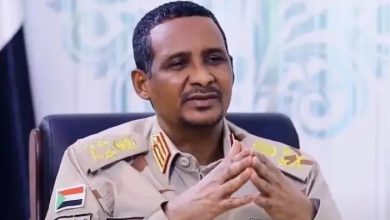The Impact of Liberating East Nile Locality and the Manshiya Bridge on Operations in Khartoum

Report by: Al-Nour Ahmed Al-Nour
The Sudanese army is close to fully controlling Khartoum state, following the neutralization of the Manshiya Bridge and the liberation of East Nile Locality, which had been a human and military stronghold for the Rapid Support Forces (RSF). It housed elite units of the RSF and three of their logistical centers.
On September 26th, the Sudanese army launched a wide military operation in the three cities of Khartoum state, crossing the White Nile, Fitihab, and Halfaya bridges toward the RSF’s objectives, and controlled key sites in central Khartoum. It then expanded into Omdurman, Um Bada Locality to the west, Khartoum North to the east, and the southern neighborhoods of Khartoum.
On Monday, the army took control of the eastern side of the Manshiya Bridge, which connects East Nile with central and eastern Khartoum. With this, the only remaining RSF-controlled bridge is the Jebel Aulia Bridge, which links Khartoum with western Omdurman, out of the ten main bridges between the three cities of Khartoum, Omdurman, and Khartoum North across the Blue Nile, White Nile, and River Nile.
What is the significance of the Manshiya Bridge?
The Manshiya Bridge was opened in early 2006, linking Khartoum with East Nile. It is 350 meters long, with two car lanes each 8.25 meters wide, separated by a median island, and pedestrian walkways on each side. It connects Khartoum to East Nile via the Blue Nile.
The bridge was a crucial supply route for the RSF, facilitating their movement between Khartoum, Khartoum North, and East Nile during military operations, allowing them to maneuver and reinforce their forces, according to a military official speaking to Al Jazeera.
On February 24th, the army regained control of the eastern entrance to the strategic Soba Bridge, linking southern Khartoum with East Nile. This left the remaining RSF forces in East Nile isolated and surrounded, with no route for withdrawal to the west toward Khartoum.
What is the importance of East Nile Locality to the RSF?
According to military expert Abu Bakr Abdel Rahim, East Nile Locality had been one of the main strongholds for the RSF, which had taken control of three important sites and turned them into logistical centers: the Khawla camp in Al-Jireif (east), near Um Dom, the Al-Nasr camp, which became a main stronghold, and the Veterinary College in Hilla Koko, which served as a military base.
The RSF also used the extensive farms in East Nile as storage for weapons and military equipment, hiding their combat vehicles from the army’s aircraft and training new fighters from the local youth and mercenaries from South Sudan, whom they recruited in large numbers.
East Nile also served as a link between the RSF’s elite forces—who had controlled the Jili oil refinery in northern Khartoum North—and their senior commanders living in the Kafouri area in the east of the locality, as well as fighters deployed across East Gezira state. This allowed them to move freely over large areas, control supply lines, and replenish weapons and fighters across the three cities of Khartoum.
What are the implications of the army’s control over East Nile on military operations in Khartoum?
Military expert Salem Abdullah explained that the presence of RSF snipers in the communication tower at the far east of Khartoum, overlooking the Manshiya Bridge, had disrupted the Sudanese army’s crossing toward Khartoum via the bridge. He considered it a matter of time to neutralize the snipers.
He anticipated that a simultaneous operation would involve the army and its supporting battalions crossing the Soba Bridge in northern East Nile, clashing with forces coming from the north of Gezira state to liberate the southern Khartoum neighborhoods of Suwaia (west), Al-Azhari, Al-Salma, and the neighborhoods south of the belt to the Sports City.
The army would then cross the Manshiya Bridge to liberate eastern Khartoum, including the Manshiya, Riyadh, Bari, and Nasser Extension neighborhoods, and join forces with those at the army’s General Command headquarters in central Khartoum, according to the military expert.
By crossing both the Manshiya and Soba bridges, all operations would shift to the western Nile in Khartoum, securing the army’s rear and enabling the execution of its military plan to liberate the southern and central parts of the capital without complications or surprise military actions from the RSF, after cutting off its supply lines, destroying its strong forces, and isolating them in narrow pockets.
What is the effect of liberating East Nile on security and military conditions?
The military expert explained that the army and elite forces that had begun their operations in East Nile, including counter-terrorism forces, Sudan Shield battalions, and the Al-Bara Brigade, were now awaiting new missions after completing their task following fierce battles.
The expert added that movement had become easier from Omdurman to Khartoum North, East Nile, Gezira state, River Nile, and Gedaref, up to Port Sudan, while the RSF had lost its strongholds, expansion points, and strategic maneuvering options.
Where are the RSF forces after the liberation of East Nile Locality?
In a post on Facebook, Al-Bara Brigade commander, Musbah Abu Zaid Talha, confirmed that the Sudanese Armed Forces had successfully liberated East Nile Locality entirely from the rebel militias, adding that the next phase would involve liberating remaining areas in Um Bada Locality to the west of Omdurman, some parts of Khartoum, and the Jebel Aulia area in the southwest of Khartoum. This would bring the army closer to fully recapturing the capital.
He further stated, “All bridges and crossings in Khartoum state are now under the control of the armed forces, except for Jebel Aulia Bridge, which is of no use to the enemy, as it is under the army’s fire, drones, and aircraft.”
What are the prospects for the conclusion of battles in Khartoum after the army’s rapid progress?
The army’s armored corps released video clips on Monday, showing its forces positioned south of the Freedom Bridge, near central Khartoum, with the Arabic Market buildings visible in the footage.
Lieutenant General Nasr El-Din Abdel Fattah, commander of the Shajara Military Zone and armored corps, while inspecting the army’s defenses at the Freedom Bridge, stated that “victory will be complete in Khartoum and all of Sudan during the holy month of Ramadan,” a month known for victories and perseverance.
He pledged that the army would reach the presidential palace and Tuti Island during Ramadan, saying that only a few meters separated his forces from crossing the Freedom Bridge and reaching the presidential palace.
The RSF had taken control of the presidential palace and ministry headquarters since the war broke out in mid-April 2023, and two months into the war, they seized control of Tuti Island in the Blue Nile.
What are the RSF’s options after being cornered in Khartoum?
An RSF media official, who requested anonymity, avoided discussing the details of the battles in Khartoum after their loss of East Nile Locality. He told Al Jazeera that their forces were preparing for a military repositioning in areas of Khartoum state, planning for a new campaign with surprises in the coming phase.
Source: Al Jazeera Net



